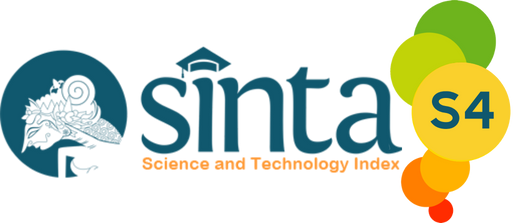Comparison of Numerical Integration with Trapesium and Romberg Methods Using Hypertext Preprocessor Program
DOI:
https://doi.org/10.29303/goescienceed.v5i3.394Keywords:
Trapezium Method, Romberg Method, PHP, Error, Completion TimeAbstract
The Trapesio and Romberg methods are two classic numerical methods for calculating integrals. The Trapesio method is a numerical integration method that uses an approach based on the area of a trapezoid, but is often less accurate for non-linear functions. In contrast, the Romberg method, which uses Richardson extrapolation, offers higher accuracy even in working on more complex mathematical functions. The purpose of this study is to compare the accuracy and speed of completion in numerical integration on various mathematical functions. The type of research used is pure experimental. Using the Hypertext Preprocessor (PHP) program, both methods are tested for accuracy and speed in solving the given problem. The results show that the Romberg method provides more accurate results than the Trapesium method with an average error of 0.979% in this study, where the result with the lowest error for the Romberg method is in the integral of the polynomial function with an error of 0%. In the case of the Trapesio method, the average error in this study is 9.497%, where the lowest error for the Trapesio method is in the exponential function integral with an error of 0.178%. However, the improvement of accuracy requires a fairly long program completion time on the Romberg method with an average completion time of 4,400 seconds, where the fastest completion time is seconds. Meanwhile, in the Trapezium method, the time required in program execution is very fast with an average of seconds, where the fastest completion time is seconds.
References
Prasetya, A. (2016). Performansi metode Trapesium dan metode Gauss-Legendre dalam penyelesaian integral tertentu berbantuan matlab. Jurnal Mercumatika, 1-12.
https://doi.org/10.26486/mercumatika.v1i1.189
Firdaus, A., Amrullah, A., Wulandari, N. P., & Hikmah, N. (2023). Analisis efisiensi integral numerik metode Simpson 1/3 dan Simpson 3/8 menggunakan program software berbasis Pascal. Jurnal Teknologi Informatika Dan Komputer, 9(2), 1051–1064.
https://doi.org/10.37012/jtik.v9i2.1737
Erviana, B. S., Amrullah, Triutami, T. W., & Subarniah, S.(2023). Efisiensi Penyelesaian Numerik Persamaan Non-Linier dengan menggunakan metode Newton Raphson dan Metode Secant menggunakan program software berbasis Python.Pendas 8(3)1719-1729.
Varberg, D., Purcell, E. J., & Rigdon, S. E. (2007). Kalkulus edisi kesembilan jilid 1. Prentice: Pearson Education.
Subarinah, S. (2022). Metode numerik. Mataram: FKIP Universitas Mataram.
Sujaya, K. A., Prayitno, S., Kurnianti, N., & Sridana, N. (2024). Efektivitas metode Brent dalam menyelesaikan masalah break even point mwnggunakan pemprograman Pascal. Mandalika 6(1), 120-130.
Bismo, S., & Muharam Y. (2010). Metode numerik: komputasi dengan fortran 77 dan turbo pascal. Depok: Universitas Indonesia.
Herfina, N., Amrullah, & Junaidi. (2019). Efektivitas Metode Trapesium dan Simpson dalam penentuan luas menggunakan program Pascal. Mandalika, 1(1)53-63.
Østerby,O.(2005).Romberg Integration Example. Denmark: Aarhus University
Ermawati, Rahayu P., & Zuhairoh F. (2017). Perbandingan solusi numerik integral lipat dua pada fungsi aljabar dengan Metode Romberg dan Simulasi Monte Carlo. MSA, 5(1)46-57.
Siswanto, E. (2021). PHP Uncover. Semarang: Yayasan Prima Agus Teknik Redaksi
Downloads
Published
How to Cite
Issue
Section
License
Copyright (c) 2024 Jurnal Pendidikan, Sains, Geologi, dan Geofisika (GeoScienceEd Journal)

This work is licensed under a Creative Commons Attribution-ShareAlike 4.0 International License.







